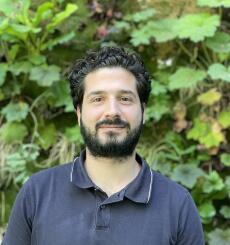Alexandros Pantagias

Molecular Behavioural Genetics
MIC | Röntgenstraße 16
D-48149 Münster, Germany
alexandros.pantagias@uni-muenster.de
Neurogenetics of Behavior
Evolutionary Developmental Biology
Biomolecular Structure Determination
Omics Data Analysis
Circadian rhythms in the red flour beetle Tribolium castaneum
Biological circadian clocks have evolved in members of most phyla, enabling them to anticipate diurnal cycles, thereby shaping the behavior, physiology, and activity of a wide range of species with respect to fluctuating environmental conditions. Such intrinsic, time-dependent events have been described to a considerable extent in various model organisms, including a thorough characterization of the fruit fly’s (Drosophila melanogaster) circadian clock and behavior. Nevertheless, comparative genomic studies indicate that the composition of insect clocks may have diversified significantly over the course of evolution. Although Coleoptera is the largest order of insects, how circadian clocks control the behavior of beetles has not been studied extensively. To approach such fundamental questions, I will take advantage of the genetically tractable red flour beetle, Tribolium castaneum (T. castaneum), which has been shown to engage in circadian rhythmic behavior in constant darkness, a phenomenon that is indicative of the presence of an endogenous timekeeping machinery. During my PhD, I will use CRISPR-Cas9 to generate the first T. castaneum mutants with loss-of-function alleles of conserved clock genes. Subsequent characterization of these mutants will allow us to probe the contribution of distinct genes to the rhythmic behavior exhibited by the red flour beetle. In addition, transgenic reporter lines will be created to enable in vivo characterization of circadian mechanisms and clock gene product oscillations in T. castaneum. This new toolkit, combined with complementary experiments, will facilitate the dissection of the basis of intraspecific variation in rhythmic locomotor activity observed in T. castaneum populations. Finally, I plan to investigate the potential role of social or conspecific cues in modulating circadian behavior and clock function in this group-living organism, a research area that may have important implications for understanding the evolution and plasticity of circadian systems.